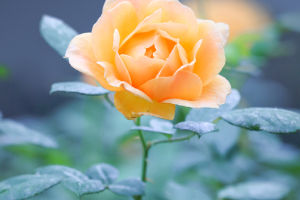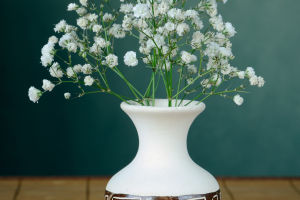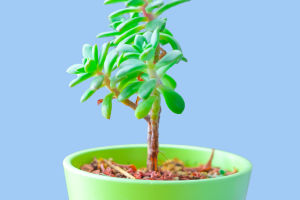Euphorbia splendens, commonly known as the crown of thorns or Christ plant, is a popular succulent plant belonging to the Euphorbiaceae family. This plant, native to Madagascar, is cultivated and grown in various regions worldwide as both a houseplant and a garden ornamental.
Let's delve into some key characteristics and facts about Euphorbia splendens:
1. Appearance: Euphorbia splendens is a spiny succulent shrub that typically reaches a height of up to 1 meter (3 feet).
It features thick, thorny stems adorned with dark green, oval-shaped leaves arranged in pairs along the stem.
However, the plant's most distinctive feature lies in its colorful bracts, which surround the tiny and inconspicuous flowers.
These bracts exhibit a wide range of colors, including shades of red, pink, orange, or yellow.
2. Growth and Care: The crown of thorns is relatively easy to cultivate and care for.
It thrives in bright, indirect light and well-draining soil.
It is remarkably drought-tolerant and can withstand dry conditions, but it also benefits from regular watering.
It is crucial, however, to avoid overwatering the plant, as excessive moisture can lead to root rot.
It's advisable to allow the soil to dry out between waterings.
Additionally, Euphorbia splendens benefit from regular fertilization during the growing season.
3. Prickly Nature: The common name "crown of thorns" refers to the long and sharp thorns present along the stems of this plant.
These thorns can cause injury, necessitating careful handling and keeping the plant away from children and pets.
4. Flowering Period: Euphorbia splendens is renowned for its long-lasting and flamboyant bracts, which resemble flowers.
The actual flowers are small and typically inconspicuous.
The plant tends to bloom consistently throughout the year, although the intensity of flowering may vary depending on environmental conditions.
5. Toxicity: Like many other species within the Euphorbia genus, Euphorbia splendens contains a milky sap that is toxic and can cause skin irritation or allergic reactions.
It is essential to handle the plant with gloves and thoroughly wash hands after any contact with the sap.
Furthermore, it is crucial to keep the plant out of reach of children and pets.
In summary, Euphorbia splendens (crown of thorns) is a popular and visually striking succulent plant that adds beauty to both indoor and outdoor spaces.
With proper care and attention, this plant can thrive and provide an attractive display of colorful bracts throughout the year.
Now, let's explore some additional details about Euphorbia splendens:
1. Propagation: Euphorbia splendens can be easily propagated through stem cuttings.
Select a healthy stem cutting that is a few inches long.
Allow the cutting to dry for a few days until a callus forms before planting it in well-draining soil.
Keep the soil lightly moist until roots develop, which generally takes a few weeks.
2. Indoor and Outdoor Cultivation: Euphorbia splendens can be cultivated both indoors and outdoors, depending on the climate.
In warmer regions, it thrives when grown outdoors in containers, rock gardens, or as part of xeriscaping landscapes.
In colder regions, it is commonly grown as a houseplant or brought indoors during the winter months.
3. Pruning: Regular pruning aids in maintaining the shape and size of Euphorbia splendens.
Remove any dead or damaged branches and trim the plant to promote bushier growth.
Due to the thorny nature of the plant, exercise caution when pruning and consider wearing gloves and protective clothing to avoid injury.
4. Pests and Diseases: Euphorbia splendens is generally resistant to most pests and diseases.
However, occasional infestations by common houseplant pests like mealybugs or spider mites may occur.
If such infestations are observed, it is advisable to isolate the affected plant and treat it with appropriate insecticides or insecticidal soap.
5. Hybrid Varieties: Over time, several hybrid varieties of Euphorbia splendens have been developed, offering a wider range of colors and growth habits.
These hybrids may exhibit larger or differently shaped bracts, making them highly sought after by collectors or enthusiasts.
It is important to note that while Euphorbia splendens is an attractive plant, its sap contains toxic compounds.
Therefore, necessary precautions should be taken when handling the plant, and it should be kept out of the reach of children and pets.
In the event of ingestion, the sap can cause gastrointestinal discomfort, necessitating prompt medical attention.
In conclusion, Euphorbia splendens, with its captivating bracts and distinctive characteristics, is a fascinating succulent plant that can enhance the beauty of indoor and outdoor spaces.
By providing the appropriate care, this plant can flourish and bring joy for many years to come.


